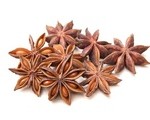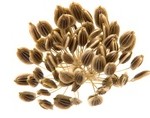Spice Facts
Botanical name: Pimenta dioica ▪ Family name: Myrtaceae
Allspice is the dried berry of an evergreen tree which grows to a height of 9-12 m, but in the wild can be up to twice this height. The round allspice berries have a rough surface because of tiny oil glands. Inside there are two hard, kidney-shaped seeds, but most of the flavour comes from the husk or shell.
Native range: West Indies, Central America, South America
Major producers: Jamaica, India
Harvesting: The fully developed but still green allspice berries are harvested between July and September, about 3–4 months after flowering. The berries change to purple then brown as they are dried in the sun.
Taste and aroma: The name “allspice” is derived from the fact that it tastes and smells like a blend of cloves, nutmeg, and cinnamon.
Culinary uses: Widely used in European cooking as an ingredient in sweet recipes including cakes, biscuits, and Christmas puddings. The ground or whole spice is also used in preserves and chutneys, and to contribute flavour in liquors such as Benedictine and Chartreuse. Whole allspice berries are a popular ingredient for mulled wine.
Other uses: Oil from the berries and leaves of allspice are used in antiseptics, medicines, and perfumes.
Historical uses: Mayan Indians used allspice to embalm their dead, and the preservative properties of allspice were valued by early seafarers for keeping both fish and meat edible on long voyages.
Storage: Allspice berries retain their freshness best if stored whole in an airtight container, and crushed or pounded when needed.
Botanical name: Pimpinella anisum ▪ Family name: Umbelliferae
Anise (or aniseed) is the dried seed of an annual herb of the parsley and carrot family. The feathery anise plant grows to about 0.6 m. The plant is mainly cultivated for its seeds, but young leaves are also used as a herb.
Native range: Eastern Mediterranean, North Africa, Central Asia
Major producers: India, Central America, South America
Harvesting: Anise plants are harvested when the fruit begins to ripen and left in stacks until ripening is complete. The tiny ovoid seeds, which vary in colour from pale brown to green-grey, are separated from the flower heads by threshing. Bits of thin stalk are often attached to the seeds.
Taste and aroma: Anise seeds have a sweet aromatic bouquet with a distinctive liquorice flavour. The spiciness of the seeds is similar to fennel.
Culinary uses: Anise is used in savoury and sweet dishes. The seeds are often dry roasted to enhance the aroma. In the Middle East and India, anise is used mainly in breads and savoury foods. Around the Mediterranean, anise is often used to flavour fish stews.
Other uses: Oil from anise seeds is used in cough mixtures, antiseptics, perfumes, and soaps. It is also an essential ingredient in aperitifs and liqueurs such as ouzo, pastis, and anisette.
Historical uses: The ability of this spice to counteract indigestion was well known to the Romans, who used to serve a special spice cake after gastronomic orgies.
Storage: Anise will retain its flavour for at least 2 years if kept in an airtight container. The aroma of ground anise dissipates quickly so grind seeds as needed.
Botanical name: Piper nigrum ▪ Family name: Piperaceae
Pepper is a perennial vine indigenous to the Malabar Coast of India, and this area is still reputed to produce the highest quality pepper. Pepper grows best in humid, rainy, tropical areas. The plants start fruiting after about 3 years and continue to do so every third year for up to 40 years. The history of the spice trade is essentially about the quest for pepper. Trade routes were fiercely protected and empires were built and destroyed because of it. In volume and value pepper remains the most important spice.
Native range: Southern India
Major producers: India, Indonesia, Brazil, Malaysia, Vietnam, Sri Lanka, Thailand, Cambodia
Harvesting: To produce black pepper, immature green berries are picked, briefly fermented, and then dried. During drying, the peppercorns shrivel, become wrinkled, and turn dark brown to black. For white peppercorns, the berries are picked when yellowish-red and almost ripe, and then soaked to soften and loosen the outer skin. Once this is removed, they are rinsed and sun dried.
Taste and aroma: Black pepper has a fine, fruity fragrance with warm, woody, and lemony notes. The taste is hot and biting with a clean, penetrating aftertaste. White pepper is less aromatic and can smell musty. The flavour of white pepper is cleaner, less rich, and not as complex as black pepper.
Culinary uses: Pepper is one of the most versatile spices. Although mostly used in savoury cooking and as a table condiment, it can also be used with fruits and in some sweet breads and cakes. Pepper brings out the flavour of other spices and retains its own flavour well during cooking.
Other uses: Pepper has long been recognised as an ingredient for stimulating the appetite as well as aiding in the relief of nausea. In India it has been used as a medicine for thousands of years to treat anything from paralysis to toothache.
Historical uses: In ancient Greece and Rome, taxes were paid in pepper. In the Middle Ages, pepper was used as money and at times was as valuable as gold.
Storage: Black and white pepper rapidly lose their flavour and aroma when ground, so it is best to buy whole peppercorns and grind or crush them as required. Whole peppercorns will keep for a year or more when stored in an airtight container.
Botanical name: Elletaria cardamom ▪ Family name: Zingiberaceae
Cardamom is the fruit of a large herbaceous perennial shrub of the ginger family. It flourishes in areas which have a constant warm temperature and with moderate rainfall, and grows wild in the forests of southern India.
Native range: Southern India, Sri Lanka
Major producers: India, Guatemala, Tanzania, Vietnam, Papua New Guinea
Harvesting: The cardamom plant bears fruit pods after 3 years and continues to produce for 10-15 years. The elongated green pods ripen from September to December and are hand picked to avoid damaging both pods and plants. This labour-intensive harvesting accounts for the fact that cardamom is one of the most expensive spices.
Taste and aroma: The aroma of cardamom is strong but mellow and it has a warm, slightly lemon-like flavour with hints of eucalyptus and camphor.
Culinary uses: Cardamom is an essential ingredient in a wide range of Indian dishes. It is often used to flavour sweets, milk products, and in masala tea. Cardamom can also be used in savoury foods like biriyani and meat curries, and it is an essential ingredient in curry powders, masalas, and other spice mixtures such as berbere from Ethiopia. Cardamom is used extensively in Scandinavian cooking, in pickles, cakes, and pastries, and with herrings. In Arab countries, cardamom-flavoured coffee (gahwa) is popular and in Bedouin culture is served with much ceremony as a symbol of hospitality.
Other uses: The seeds and pods of cardamom contain an essential oil which is used in perfumes and as a stimulant.
Historical uses: Cardamom has been used in Indian ayurvedic medicine for more than 2,000 years to ‘remove fat’ and as a cure for urinary and skin complaints. It reached Europe along the caravan routes, and the Vikings took it from Constantinople to Scandinavia. Cardamom was used in perfumes by the ancient Greeks and Romans.
Storage: Cardamom pods should be stored in an airtight container in a cool dark place.
Botanical name: Capsicum frutescens ▪ Family name: Solanaceae
Cayenne pepper is a very fine powder made from especially hot varieties of capsicum peppers. It is named on account of its origins in the Cayenne region of French Guyana. The placenta and seeds are included in the powder, adding to its ‘hotness’, so it should be used judiciously.
Native range: Central America, South America, Caribbean Islands
Major producers: India, Japan, East Africa
Harvesting: Most capsicum peppers are grown as annuals and harvesting of the ripe fruits occurs about 3 months after planting. The whole peppers are dried and then powdered.
Taste and aroma: The aroma of cayenne is intensely pungent. The flavour is tart, slightly smoky, pungent, and very hot.
Culinary uses: Cayenne is widely used as a seasoning (in tiny amounts), in savoury biscuits, and cheese and egg dishes. It is commonly used in ethnic dishes such as Mexican chilli, Chinese hot and sour soup, and Indian curries. The main point to remember about cayenne is that it is very hot, so follow the recipe carefully. You can always add more, but you cannot take it out!
Storage: It should be kept in an airtight container away from light.
Botanical name: Apium graveolens ▪ Family name: Umbelliferae
Celery is an herbaceous member of the carrot, parsley, and caraway family, developed by Italian gardeners in the 17th century from the wild celery of the European salt marshes – a plant know as “smallage”. In the second year, the flower head produces masses of small seeds which are grey-brown with fine ridges.
Native range: widely distributed
Major producers: India, China, Madagascar, USA, France
Taste and aroma: Celery seeds have a strong and sometimes bitter flavour, and a distinctive celery aroma. The pungency and taste are particularly noticeable in the ground spice.
Culinary uses: Celery seeds are sometimes added to bread dough, or cheese biscuits and scones. They can be sprinkled over boiled carrots, grilled tomatoes, or cold salads. Celery seeds are a great complement for egg and fish dishes. Celery salt and celery pepper are both made by grinding the seeds with either salt or peppercorns, and make strongly flavoured seasonings.
Other uses: The essential oil from celery seeds is sometimes used in the treatment of asthma, flatulence, and bronchitic ailments.
Historical uses: The ancient Greeks and Romans used the wild celery plant for medicinal purposes and it was also widely believed to have aphrodisiac powers. Cultivation during the Middle Ages led to improved quality celery and its use as a spice increased.
Storage: Celery seeds will keep their flavour and aroma for up to 2 years or more if stored in an airtight container.
Botanical name: Capsicum annum, Capsicum frutescens ▪ Family name: Solanaceae
Chillies belong to the potato, tomato, and aubergine family of plants, and have been cultivated for thousands of years. There are at least 150 different types of chillies, which are the world’s biggest spice crop. They are now grown in all tropical regions and eaten daily by about a quarter of the world’s population. Chillies are an excellent source of vitamins A and C, and provide that added benefit to the millions of people who eat them as a means of pepping up a bland and unvarying diet.
Native range: Central America, South America, Caribbean Islands
Major producers: India, Thailand, Mexico, USA, South Korea, Turkey, Ethiopia, Uganda, Kenya, Tanzania
Harvesting: Most chillies are grown as annuals and harvesting occurs about 3 months after planting. Green chillies are immature fruits and red chillies have been allowed to ripen for a further 4 weeks. Most of the chilli crop is dried, either in the sun or artificially.
Taste and aroma: Chillies range in taste from mild and tingling to explosively hot. Large, fleshy varieties tend to be milder than small, thin-skinned ones. The characteristic pungency of chillies comes from the presence of capsaicin, which stimulates the digestive and circulatory processes.
Culinary uses: Chillies can be used whole (fresh or dried), or in crushed or powdered form. Chilli powders are prepared from a variety of mild to hot chillies, and are typically milder than cayenne pepper. Crushed chilli (or chilli flakes) contains both the flesh and seeds from red chillies and can be used instead of chilli powder.
Other uses: Oleoresins (a mixture of resin and oil) extracted from chillies contain capsaicin and are used in processed food. Capsaicin has counter-irritant properties and is used in pain balms and liniment. It is also the essential ingredient in pepper sprays used by law enforcement agencies.
Historical uses: Use of this hot spice in Mexico is recorded as early as 7000 BC. Christopher Columbus took chilli plants back to Spain and from there they spread to Africa, India, and the Far East, where they quickly became an integral part of each cuisine.
Storage: Fresh chillies keep in the refrigerator for a week or more. Dried chillies and chilli powder will keep almost indefinitely in an airtight container
Botanical name: Capsicum annum, Capsicum frutescens ▪ Family name: Solanaceae
Chillies belong to the potato, tomato, and aubergine family of plants, and have been cultivated for thousands of years. There are at least 150 different types of chillies, which are the world’s biggest spice crop. They are now grown in all tropical regions and eaten daily by about a quarter of the world’s population. Chillies are an excellent source of vitamins A and C, and provide that added benefit to the millions of people who eat them as a means of pepping up a bland and unvarying diet.
Native range: Central America, South America, Caribbean Islands
Major producers: India, Thailand, Mexico, USA, South Korea, Turkey, Ethiopia, Uganda, Kenya, Tanzania
Harvesting: Most chillies are grown as annuals and harvesting occurs about 3 months after planting. Green chillies are immature fruits and red chillies have been allowed to ripen for a further 4 weeks. Most of the chilli crop is dried, either in the sun or artificially.
Taste and aroma: Chillies range in taste from mild and tingling to explosively hot. Large, fleshy varieties tend to be milder than small, thin-skinned ones. The characteristic pungency of chillies comes from the presence of capsaicin, which stimulates the digestive and circulatory processes.
Culinary uses: Chillies can be used whole (fresh or dried), or in crushed or powdered form. Chilli powders are prepared from a variety of mild to hot chillies, and are typically milder than cayenne pepper. Crushed chilli (or chilli flakes) contains both the flesh and seeds from red chillies and can be used instead of chilli powder.
Other uses: Oleoresins (a mixture of resin and oil) extracted from chillies contain capsaicin and are used in processed food. Capsaicin has counter-irritant properties and is used in pain balms and liniment. It is also the essential ingredient in pepper sprays used by law enforcement agencies.
Historical uses: Use of this hot spice in Mexico is recorded as early as 7000 BC. Christopher Columbus took chilli plants back to Spain and from there they spread to Africa, India, and the Far East, where they quickly became an integral part of each cuisine.
Storage: Fresh chillies keep in the refrigerator for a week or more. Dried chillies and chilli powder will keep almost indefinitely in an airtight container.
Botanical name: Capsicum annum, Capsicum frutescens ▪ Family name: Solanaceae
Chillies belong to the potato, tomato, and aubergine family of plants, and have been cultivated for thousands of years. There are at least 150 different types of chillies, which are the world’s biggest spice crop. They are now grown in all tropical regions and eaten daily by about a quarter of the world’s population. Chillies are an excellent source of vitamins A and C, and provide that added benefit to the millions of people who eat them as a means of pepping up a bland and unvarying diet.
Native range: Central America, South America, Caribbean Islands
Major producers: India, Thailand, Mexico, USA, South Korea, Turkey, Ethiopia, Uganda, Kenya, Tanzania
Harvesting: Most chillies are grown as annuals and harvesting occurs about 3 months after planting. Green chillies are immature fruits and red chillies have been allowed to ripen for a further 4 weeks. Most of the chilli crop is dried, either in the sun or artificially.
Taste and aroma: Chillies range in taste from mild and tingling to explosively hot. Large, fleshy varieties tend to be milder than small, thin-skinned ones. The characteristic pungency of chillies comes from the presence of capsaicin, which stimulates the digestive and circulatory processes.
Culinary uses: Chillies can be used whole (fresh or dried), or in crushed or powdered form. Chilli powders are prepared from a variety of mild to hot chillies, and are typically milder than cayenne pepper. Crushed chilli (or chilli flakes) contains both the flesh and seeds from red chillies and can be used instead of chilli powder.
Other uses: Oleoresins (a mixture of resin and oil) extracted from chillies contain capsaicin and are used in processed food. Capsaicin has counter-irritant properties and is used in pain balms and liniment. It is also the essential ingredient in pepper sprays used by law enforcement agencies.
Historical uses: Use of this hot spice in Mexico is recorded as early as 7000 BC. Christopher Columbus took chilli plants back to Spain and from there they spread to Africa, India, and the Far East, where they quickly became an integral part of each cuisine.
Storage: Fresh chillies keep in the refrigerator for a week or more. Dried chillies and chilli powder will keep almost indefinitely in an airtight container.
Botanical name: Cinnamomum zeylanicum ▪ Family name: Lauraceae
Cinnamon is the inner bark of a bushy, evergreen tree of the laurel family, typically cultivated as low bushes to make harvesting easier.
Native range: Sri Lanka, Myanmar (formerly Burma), Southern India
Major producers: Sri Lanka, India, Seychelles, Reunion
Harvesting: This spice is prepared by cutting the slim branches from the cinnamon bushes. Long incisions are made in the branches and the bark peeled off for drying. Harvesting occurs during the rainy season, when the humidity makes the bark peel more easily. The quills of bark are rolled by hand until neat and compact, then gently dried in the shade.
Taste and aroma: The bouquet of cinnamon is sweet and fragrant, and its flavour is sweet and warm.
Culinary uses: Cinnamon is used in a wide range of food products including drinks. Whole quills of cinnamon can be used for certain dishes but this spice is most commonly used in ground form. Cinnamon goes well with meat, but is most commonly used in cakes, biscuits, and desserts.
Other uses: Cinnamon is a stimulant, astringent, and carminative, and is used as an antidote for diarrhea and stomach upsets. Cinnamon oil has germicidal properties and is used in dental preparations. It is also used in the manufacture of perfumes.
Historical uses: Cinnamon has long been associated with ancient rituals of sacrifice or pleasure. The ancient Egyptians used this spice for embalming and throughout the Old Testament of the Bible there are references illustrating that this spice was more precious than gold.
Storage: This spice is usually stored in whole form. The quills will retain their aroma and flavour for 2-3 years if stored in an airtight container. Ground cinnamon loses its flavour quite quickly, so it is best purchased in small quantities and kept in an airtight container.
Botanical name: Syzyium aromaticum ▪ Family name: Myrtaceae
The clove tree is a tropical evergreen of the myrtle family which grows to a height of about 12 m. Its crimson flowers seldom open and it is these unopened flower buds that constitute the clove spice.
Native range: Moluccas (part of the Indonesian archipelago)
Major producers: Indonesia, Madagascar, Sri Lanka, Tanzania
Harvesting: Clove buds appear in small clusters, twice a year, from July to September and July to January. Cloves are harvested by hand to avoid damaging the branches and affecting future crops. The clove buds are then dried in the sun and turn reddish to dark brown.
Taste and aroma: Cloves have a powerful fragrant aroma, with hints of pepper and camphor. The taste is fruity but also sharp, hot, and bitter.
Culinary uses: Cloves are included in many classic spice mixtures including Chinese five spice powder, curry powders, pickling spices, and ground mixed spice for baking. Whole cloves are often used to flavour cooking liquids for simmering fish, poultry, or meat, and as a garnish for baked hams. Cloves have a particular association with apples and are added to apple sauces, tarts, and other desserts.
Other uses: Oil of cloves which is distilled from buds, leaves, and stalks is a strong antiseptic and preservative. It is used in toothpastes and mouthwashes.
Historical uses: Chinese physicians appreciated the medicinal benefits of cloves as early as 3 BC. Dignitaries visiting the emperor were expected to suck cloves to sweeten their breath. The natives of the Moluccas (or Spice Islands) used to plant a clove tree to celebrate the birth of a child.
Storage: Whole cloves will keep for at least a year if stored in an airtight container and kept in a cool place away from strong light.
Botanical name: Coriandrum sativum ▪ Family name: Umbelliferae
Coriander is a slender, solid-stemmed plant belonging to the carrot and parsley family, growing to a height of about 0.6 m. It is used both as a herb (the leaves) and a spice (the dried fruits or seeds).
Native range: Mediterranean Region, Middle East
Major producers: Eastern Europe, India, Morocco, USA, Central America, Brazil
Harvesting: The seeds are harvested when they change colour from green to light brown, then threshed and dried in partial shade. In some regions the seeds are dried artificially.
Taste and aroma: Coriander seeds have a sweet, woody fragrance with peppery and floral notes. The taste is sweet, mellow, and warm with a clear hint of orange peel.
Culinary uses: Coriander is generally used in larger amounts than other spices because its flavour is mild. After dry roasting, coriander forms the basis of many curry powders and masalas. Whole coriander may be added to chicken and pork casseroles, and it is one of the ingredients in pickling spice. It is also used in condiments, seasonings, and as an ingredient in sweet spice mixtures for cakes and biscuits.
Other uses: Coriander has antibacterial properties and is included in treatments for colic, neuralgia, and rheumatism. Before toothpaste was commonly used, coriander seeds were chewed as a breath freshener.
Historical uses: Coriander has been used as a flavouring and medicine since ancient times, as early as 5000 BC according to Indian vedic literature. Seeds have been found in the tombs of the pharaohs from around 1000 BC, and the Roman legions carried coriander as they progressed through Europe, using it to flavour their bread.
Storage: The seeds have a long shelf life and are easily ground to a powder.
Botanical name: Cuminum cyminum ▪ Family name: Umbelliferae
Cumin is a small annual herbaceous plant of the parsley and carrot family, and grows to a height of about 25 cm. Cumin grows best in regions with a sunny climate and some rainfall.
Native range: Egypt, Eastern Mediterranean countries
Major producers: India, China, Morocco, Iran, Turkey, Central America
Harvesting: Cumin stalks are harvested when the plants begin to wither and the seeds turn brown. They are then threshed and the seeds are dried in the sun. In many countries the harvest is still done manually.
Taste and aroma: Cumin has a strong, spicy, sweet aroma. The taste is rich, slightly bitter, and warm. The pungency and taste are particularly noticeable in the ground spice.
Culinary uses: Because of its strong flavour, ground cumin is popular in cuisines which are generally highly spiced such as many Indian, Middle Eastern, North African, and Mexican dishes. Cumin is an essential ingredient in curry powders and masalas. The aroma of cumin is enhanced if the seeds are dry roasted before they are ground.
Other uses: Cumin is regarded as an appetite stimulant, and is widely used to ease stomach disorders, flatulence, colic, and diarrhoea. It is also used in veterinary medicines and cumin oil is used in perfumes.
Historical uses: Cumin was used in medicines in Egypt and Minoan Crete at least 4,000 years ago. The Romans used it the way we use pepper. During the Middle Ages cumin was popular in Europe, but gradually caraway took its place.
Storage: Cumin seeds will keep their pungency for a year or more if stored in an airtight container, but ground cumin has a relatively short shelf life.
Botanical name: Foeniculum vulgare ▪ Family name: Umbelliferae
Fennel is a seed spice from a tall, leggy, aromatic perennial of the parsley and carrot family. The fennel plant is now naturalised in many parts of the world, and is one of the oldest cultivated plants.
Native range: Southern Europe, Mediterranean Region
Major producers: India, Argentina, Romania, Bulgaria, Russia, Japan, USA
Harvesting: The seeds are harvested when the fruits are mature and sage green in colour.
Taste and aroma: Fennel has a sweet, warm, anise-liquorice aroma. The taste is slightly sweet with a hint of mild anise. Fennel seeds are less pungent than dill, and more astringent than anise.
Culinary uses: Fennel is often used to complement fish, meat, and poultry dishes. Dry roasting the seeds brings out the sweetness. Ground fennel is used in many curry powders and in Chinese five spice powder. Crushed seeds are used in salad dressings, and in savoury and sweet baking.
Other uses: Indians often chew fennel after a meal as a breath freshener and digestive aid. Fennel oil is used in cough medicine, liquorice sweets, perfumes, and soaps.
Historical uses: The Romans enjoyed fennel shoots as a vegetable, and the Chinese and Indians valued fennel as a condiment and digestive aid.
Storage: Fennel seed will keep for up to 2 years when stored in an airtight container.
Botanical name: Trigonella foenum-graecum ▪ Family name: Leguminosae
Fenugreek is a seed spice from a small annual leguminous plant which grows to about 0.6 m with light green leaves similar in appearance to clover. Fenugreek is rich in protein, minerals, and vitamins, which makes it an important ingredient in the vegetable and dhal dishes eaten in the poorer parts of India.
Native range: India, Southern Europe
Major producers: India, Pakistan, Lebanon, Egypt, France, Argentina
Harvesting: Fenugreek plants are harvested when the flowers have developed into light brown seed pods. Between 10 and 20 seeds are obtained from each pod.
Taste and aroma: Fenugreek seeds are highly aromatic, with a curry-like smell. The taste is celery-like and bitter.
Culinary uses: Fenugreek seeds are used in curry powders, spiced fish dishes, and in Indian pickles and chutneys. In Egypt and Ethiopia fenugreek is used to flavour bread, and it is a vital constituent in the Ethiopian berbere spice mixture.
Other uses: Fenugreek is used in the cosmetic industry. It is also used as a conditioning powder to produce a glossy coat on horses.
Historical uses: The ancient Egyptians used fenugreek for embalming, and also burnt it as incense. The Romans used it as fodder for their animals, and this is still the practice in India today.
Storage: Fenugreek seeds can retain their flavour and aroma for a year or more when stored in an airtight container in a cool place. The powder loses its flavour if stored for long periods.
Botanical name: Zingiber officinale ▪ Family name: Zingiberaceae
Ginger is the rhizome of the ginger plant. The rhizomes are easily transported and Arab traders introduced this plant to East Africa many centuries ago. In the world trade, Jamaican ginger is rated the highest but production is very limited. Ginger from the Kerala region of India is also renowned for its quality.
Native range: India, China
Major producers: India, China, Nigeria, Sierra Leone, Jamaica, Australia
Harvesting: Harvesting takes place about 9 months after planting and in many parts of the world is still done by hand. Much of the crop is washed, then sun-dried and ground to a powder for domestic and commercial use.
Taste and aroma: Ginger has a warm lemony aroma and the taste is fiery, pungent, and penetrating.
Culinary uses: Fresh root ginger is widely used in many cuisines, including a variety of stir-fry and curry dishes in India and Oriental countries. Ground ginger is essential in much Western baking including cakes, biscuits, and traditional gingerbread. Dried ginger has a different taste to fresh ginger, and one should not be substituted for the other.
Other uses: The essential oil from this spice is often used in the production of perfumes.
Historical uses: The Assyrians and Babylonians used ginger in their cooking, as did the Egyptians, Greeks, and Romans. Ginger was used as a table condiment in Europe by the 9th century and such was the demand by the 16th century that the Spanish and Portuguese were planting it in their new tropical territories.
Storage: Fresh ginger rhizomes keep well in the vegetable drawer of the refrigerator for up to 2 weeks. Good quality dried rhizomes will keep their flavour for 2 years or more when stored in an airtight container.
Botanical name: Myristica fragrans ▪ Family name: Myristacaceae
Mace and nutmeg are different parts of the same fruit of the nutmeg tree. The fruit, which is about the size of an apricot and similar in colour, splits when ripe to reveal brilliant red arils encasing the brown nut. These red arils are mace, which turns to an orange colour on drying.
Native range: Banda Islands (part of the Indonesian archipelago)
Major producers: Indonesia, Sri Lanka, India, West Indies
Harvesting: The ripe fruit of nutmeg trees is collected and the outer skin and white flesh removed to reveal the seed. The thin, leathery, lacy, bright scarlet aril (the mace) that surrounds the seed is removed, pressed flat, and dried for a few hours only. Mac from the West Indies is typically stored in the dark for about 4 months, during which time it turns a deep orange-yellow.
Taste and aroma: Mace has nutmeg’s rich and warm aroma but the smell is stronger with hints of pepper and cloves. The taste of mace is warm and subtle with some lemony sweetness.
Culinary uses: Mace is commonly used in savoury dishes and to flavour milk-based sauces such as bechamel. It is often added sparingly to delicate soups and sauces for eggs, fish, and other seafood. It is widely used in processed meats, such as sausages and charcuterie. Mace and its oil are used in many processed foods where nutmeg is used, but being more costly it is usually used in more expensive foods. Whole mace can be easily ground using a coffee grinder.
Storage: Ground mace is more commonly available than whole pieces (called blades) but the latter are worth seeking out as these keep almost indefinitely when stored in an airtight container.
Botanical name: Brassica alba, B. juncea, B. nigra ▪ Family name: Cruciferae
Mustard is the seed of an erect, multi-branched herbaceous plant. During the Middle Ages mustard was introduced into Spain by Arab traders, and it was soon carried throughout Europe.
Native range: Southern Europe, Western Asia (black and yellow mustard); India (brown mustard)
Major producers: India, Europe, North America
Harvesting: Mustard is harvested by cutting the stalks when the seeds are fully developed but not quite ripe, to avoid the seed pods bursting and spilling their contents. The stalks are dried, then threshed.
Taste and aroma: Whole mustard seeds have little or no aroma. The hot taste which gives mustard its ‘bite’ is released only when the seeds are crushed or ground and mixed with water. This activates an enzyme present in the seeds, and it reacts with other natural constituents to produce the essential oil which gives the characteristic taste.
Culinary uses: Mustard is an indispensable ingredient in cooking. Yellow mustard seeds are used primarily as a pickling and preserving spice, and in marinades. Black and brown mustard seeds are used in India in curry powders and in spiced ghee (baghar or tadka). Ground yellow mustard powder is used in salad dressing and mayonnaise, where it helps the emulsification of the egg yolk and oil.
Other uses: Mustard is a stimulant and it is used to relieve respiratory complaints and rheumatism. Mustard also used to be given as a laxative and emetic.
Historical uses: Mustard has featured in history and literature since early times. Pythagoras suggested a mustard paste as a treatment for scorpion stings. Hippocrates, the father of modern medicine, recommended mustard for both internal and external use.
Storage: All forms of mustard store well for many months provided they are kept scrupulously dry.
Botanical name: Brassica alba, B. juncea, B. nigra ▪ Family name: Cruciferae
Mustard is the seed of an erect, multi-branched herbaceous plant. During the Middle Ages mustard was introduced into Spain by Arab traders, and it was soon carried throughout Europe.
Native range: Southern Europe, Western Asia (black and yellow mustard); India (brown mustard)
Major producers: India, Europe, North America
Harvesting: Mustard is harvested by cutting the stalks when the seeds are fully developed but not quite ripe, to avoid the seed pods bursting and spilling their contents. The stalks are dried, then threshed.
Taste and aroma: Whole mustard seeds have little or no aroma. The hot taste which gives mustard its ‘bite’ is released only when the seeds are crushed or ground and mixed with water. This activates an enzyme present in the seeds, and it reacts with other natural constituents to produce the essential oil which gives the characteristic taste.
Culinary uses: Mustard is an indispensable ingredient in cooking. Yellow mustard seeds are used primarily as a pickling and preserving spice, and in marinades. Black and brown mustard seeds are used in India in curry powders and in spiced ghee (baghar or tadka). Ground yellow mustard powder is used in salad dressing and mayonnaise, where it helps the emulsification of the egg yolk and oil.
Other uses: Mustard is a stimulant and it is used to relieve respiratory complaints and rheumatism. Mustard also used to be given as a laxative and emetic.
Historical uses: Mustard has featured in history and literature since early times. Pythagoras suggested a mustard paste as a treatment for scorpion stings. Hippocrates, the father of modern medicine, recommended mustard for both internal and external use.
Storage: All forms of mustard store well for many months provided they are kept scrupulously dry.
Botanical name: Myristica fragrans ▪ Family name: Myristacaceae
The nutmeg tree is a large evergreen tree, native to the Banda Islands in the Moluccas. Inside its apricot-like fruit lies a hard seed, the kernel of which is the spice nutmeg. The Portuguese were able to keep the source of nutmeg and mace a close secret for nearly a century until they were driven out of the Spice Islands by the Dutch. After the English captured the Spice Islands in 1796, the British East India Company introduced the nutmeg tree to Malaysia, India, Sri Lanka, and the West Indies. Grenada, in the West Indies, now produces almost a third of the world’s nutmeg crop.
Native range: Banda Islands (part of the Indonesian archipelago)
Major producers: Indonesia, Sri Lanka, India, West Indies
Harvesting: The yellowish, apricot-like fruits are gathered when they ripen, then the outer skin, white flesh, and mace are removed. The seeds, covered by a hard, brown-black shell, are dried on trays for 6-8 weeks, until the nutmeg kernel rattles in its shell. The shells are then cracked open and the smooth, brown nutmegs are removed and graded by size.
Taste and aroma: Nutmeg smells sweet but is more camphorous and pine-like than mace. The taste is warm and highly aromatic, with hints of clove and a deeper woody flavour.
Culinary uses: In India, nutmeg is used more than mace because of the latter’s high cost. It is an ingredient in Moghul dishes and the Arabs have long used nutmeg (and mace) to flavour mutton and lamb dishes. Western cuisine makes extensive use of nutmeg in both sweet and savoury dishes.
Other uses: Nutmeg and its extracts are extensively used in liqueurs, chewing gum, and confectionery. Nutmeg oil is used in perfumes and ointments.
Historical uses: The early use of nutmeg in China, India, Arabia, and Europe was medicinal. Nutmeg gained importance as a spice only after the Portuguese started trading directly from the Banda Islands in the 16th century.
Storage: Nutmeg is best bought whole. It keeps almost indefinitely when stored in an airtight container and is easily ground or grated as required
 Paprika
Paprika
Botanical name: Capsicum annum, Capsicum frutescens ▪ Family name: Solanaceae
Paprika is a fine powder made from especially mild varieties of capsicum peppers. Since the purpose of paprika is to enrich food with a bright red colour and not to make it hot, it can be considered a separate spice.
Native range: Central America, South America, Caribbean Islands
Major producers: Spain, Portugal
Harvesting: Most capsicum peppers are grown as annuals and harvesting occurs about 3 months after planting. The core and seeds are removed, and then the flesh is dried and powdered. For Spanish paprika (or pimenton), the peppers are dried over oak fires for a smoky flavour.
Taste and aroma: The aroma of paprika tends to be delicate with various types having hints of caramel, fruitiness, or smokiness. Flavours vary from sweetly smoky to more full bodied and pungent with a hint of bitterness.
Culinary uses: Paprika is the predominant spice and colouring in Hungarian cooking and they use it generously in their famous goulashes, stews, and chicken dishes. Hungarians have adopted paprika as their national spice, and in Hungary, the Balkan countries, and Turkey it is more usual to find paprika or chilli flakes on the table than black pepper. Paprika is also a common ingredient in Spanish and Portuguese cuisine. It is used in sofrito, the mixture of onions and other ingredients fried in olive oil that forms the basis of many slow-cooked dishes. In Morocco it is widely used in spice blends, and in India its principal use is to add a red colour to dishes. Everywhere it is used as an essential flavouring for sausages and other meat products. Paprika should never be overheated since it becomes bitter.
Other uses: Paprika oleoresin (the essential oil extract) with its red pigments is used in chicken feed to give the yolk a richer colour.
Storage: It should be kept in an airtight container away from light otherwise it will lose its vibrancy
Botanical name: Illicium verum ▪ Family name: Magnoliaceae
Star anise is the dried fruit of a small to medium evergreen tree. The tree bears fruit after about 6 years and can have a productive life of up to 100 years. Each point of the star-shaped husk contains a shiny amber-coloured seed. Both the seed and husk are used for the ground spice.
Native range: Southern China, Vietnam
Major producers: China, Vietnam, India, Japan, Philippines
Harvesting: The fruits are harvested before they ripen and sun-dried which hardens and darkens the carpels and develops the aromatic compounds.
Taste and aroma: The aroma is fennel- and anise-like, with warm notes of liquorice. The flavour is pungent and sweet, and distinctly liquorice-like.
Culinary uses: Star anise is one of the most important spices in Chinese cuisine and it is the dominant flavour in Chinese five spice powder. In Chinese and Vietnamese cooking, star anise is used in soups and stocks, and in meat preparations especially chicken and pork. Star anise is also a regular ingredient in the cuisine of southern India. It is little used in western cuisine, but is excellent for enhancing the sweetness of leeks, pumpkin, and root vegetables.
Other uses: Star anise is an essential flavouring agent in drinks such as pastis and anisette, and in chewing gum and confectionery. It is also used in cough medicines, and sometimes added to pet foods.
Historical uses: Star anise has a long history of medicinal and culinary use in Asian countries. It was known in Europe in the 17th century, and old recipes indicate that is was mostly used to flavour syrups, cordials, and preserves.
Storage: The whole spice will last for up to a year if kept away from bright light in an airtight container. The ground spice lasts for only 2-3 months so should be bought in small quantities.
Botanical name: Curcuma longa ▪ Family name: Zingiberaceae
Turmeric is a member of the ginger family and consists of a bright, deep yellow rhizome similar in size and appearance to ginger. It thrives in hot, moist, tropical conditions and is valued more for its bright yellow colour than as a flavouring agent.
Native range: Southern Asia
Major producers: India, China, Haiti, Indonesia, Jamaica, Malaysia, Pakistan, Peru, Sri Lanka, Vietnam
Harvesting: Turmeric rhizomes are harvested about 9 months after planting. The rhizomes are then boiled, peeled, and dried in the sun before they are graded for quality. Almost all the turmeric crop is ground and sold as powder.
Taste and aroma: Fresh turmeric is crunchy and has gingery, citrus aromas. Dried turmeric has a more complex woody aroma but still with hints of citrus and ginger. The taste is warm, slightly bitter, and sour.
Culinary uses: In India and the West Indies, ground turmeric combined with other spices is the basis of masalas, curry powders, and pastes. It is also used to impart a warm flavour and yellow colour to many vegetable, bean, and lentil dishes. It is used in North African tagines and stews, the Moroccan spice blend ras el hanout, and in harira, the national soup of Morocco. In the West it is mainly used as a colouring agent for cheeses, margarines, and some mustard preparations.
Other uses: Turmeric has been used as a dye and a medicine throughout the Asian region for centuries. It is used to ease liver complaints and stomach ulcers.
Historical uses: The role of turmeric as a dye was first recorded by the Assyrians around 600 BC and it is still used as a dye for cotton and silk.
Storage: Stored in an airtight container, it retains its flavour for up to a year.
Botanical name: Piper nigrum ▪ Family name: Piperaceae
Pepper is a perennial vine indigenous to the Malabar Coast of India, and this area is still reputed to produce the highest quality pepper. Pepper grows best in humid, rainy, tropical areas. The plants start fruiting after about 3 years and continue to do so every third year for up to 40 years. The history of the spice trade is essentially about the quest for pepper. Trade routes were fiercely protected and empires were built and destroyed because of it. In volume and value pepper remains the most important spice.
Native range:: Southern India
Major producers: India, Indonesia, Brazil, Malaysia, Vietnam, Sri Lanka, Thailand, Cambodia
Harvesting: To produce black pepper, immature green berries are picked, briefly fermented, and then dried. During drying, the peppercorns shrivel, become wrinkled, and turn dark brown to black. For white peppercorns, the berries are picked when yellowish-red and almost ripe, and then soaked to soften and loosen the outer skin. Once this is removed, they are rinsed and sun dried.
Taste and aroma: Black pepper has a fine, fruity fragrance with warm, woody, and lemony notes. The taste is hot and biting with a clean, penetrating aftertaste. White pepper is less aromatic and can smell musty. The flavour of white pepper is cleaner, less rich, and not as complex as black pepper.
Culinary uses: Pepper is one of the most versatile spices. Although mostly used in savoury cooking and as a table condiment, it can also be used with fruits and in some sweet breads and cakes. Pepper brings out the flavour of other spices and retains its own flavour well during cooking.
Other uses: Pepper has long been recognised as an ingredient for stimulating the appetite as well as aiding in the relief of nausea. In India it has been used as a medicine for thousands of years to treat anything from paralysis to toothache.
Historical uses: In ancient Greece and Rome, taxes were paid in pepper. In the Middle Ages, pepper was used as money and at times was as valuable as gold.
Storage: Black and white pepper rapidly lose their flavour and aroma when ground, so it is best to buy whole peppercorns and grind or crush them as required. Whole peppercorns will keep for a year or more when stored in an airtight container
Curry Powder ~ Hot
Curry powder is a blend of many different spices. In a huge sub-continent like India and in neighbouring countries throughout the East, individual spices are mixed to complement the particular style of local cuisine. The various curry powders reflect the availability of the spices and the climate of the region to which they are credited. Curry powders from the hotter regions contain more fiery chilli flavours – for example, Madras, Mysore, and Goa (vindaloo) are all hot, while those from the cooler, northern regions usually have warmer and more fragrant flavours. The type of curry powder used is also specific to the type of dish – for example, that used for vegetable dishes is typically sweet and aromatic, that for meat dishes is usually hot and pungent, and that for seafood is usually mild and faintly tangy.
The main spices used in curry powders include dried red chillies, coriander seeds, cumin seeds, fenugreek seeds, black mustard seeds, black peppercorns, ground tumeric, and ground ginger. Occasional ingredients include cinnamon, cardamoms, fennel seeds, cloves, curry leaves, cayenne pepper, and allspice. Commercial curry powders usually contain at least a dozen different spices and often as many as twenty. It is the ground tumeric that gives curry powder its typical colour.
Curry powder is a blend of many different spices. In a huge sub-continent like India and in neighbouring countries throughout the East, individual spices are mixed to complement the particular style of local cuisine. The various curry powders reflect the availability of the spices and the climate of the region to which they are credited. Curry powders from the hotter regions contain more fiery chilli flavours – for example, Madras, Mysore, and Goa (vindaloo) are all hot, while those from the cooler, northern regions usually have warmer and more fragrant flavours. The type of curry powder used is also specific to the type of dish – for example, that used for vegetable dishes is typically sweet and aromatic, that for meat dishes is usually hot and pungent, and that for seafood is usually mild and faintly tangy.
The main spices used in curry powders include dried red chillies, coriander seeds, cumin seeds, fenugreek seeds, black mustard seeds, black peppercorns, ground tumeric, and ground ginger. Occasional ingredients include cinnamon, cardamoms, fennel seeds, cloves, curry leaves, cayenne pepper, and allspice. Commercial curry powders usually contain at least a dozen different spices and often as many as twenty. It is the ground tumeric that gives curry powder its typical colour.
A masala is a blend of spices – it may contain two or three, or a dozen or more. It may be added to the dish, whole or ground, at different stages of cooking. The flavours can be mild and fragrant or more highly spiced, depending on the dish in which the masala is to be used. The spices for the masalas are usually dry-fried before grinding, which greatly enhances their flavour.
Biryani masala: This is a mixture of spices specifically used for a range of southern Asian rice dishes prepared with meat or vegetables. The ingredients are usually layered and the dish baked to infuse the flavours together. Typical ingredients for biriyani masala include cinnamon, cardamom, cloves, coriander, nutmeg, fennel, mace, caraway, and star anise. Premium varieties of biriyani masala sometimes contain saffron. This spice mixture gives the dish a sweet, warm aroma and the taste is savoury and not too spicy.
A masala is a blend of spices – it may contain two or three, or a dozen or more. It may be added to the dish, whole or ground, at different stages of cooking. The flavours can be mild and fragrant or more highly spiced, depending on the dish in which the masala is to be used. The spices for the masalas are usually dry-fried before grinding, which greatly enhances their flavour.
Tandoori masala: This spice mixture is specifically for use with a tandoor (clay oven) in traditional north Indian or Afghani cooking, but it can also be used for food cooked in the oven or on a barbeque. The exact spices used vary from one region to another, but typically include fenugreek, cinnamon, cumin, coriander, cloves, mace, tumeric, ginger, cayenne pepper, and paprika. Red food colouring is sometimes added to this spice mixture. It is common to mix this masala with plain yoghurt and then coat the meat (usually chicken) with this mixture before cooking.
A masala is a blend of spices – it may contain two or three, or a dozen or more. It may be added to the dish, whole or ground, at different stages of cooking. The flavours can be mild and fragrant or more highly spiced, depending on the dish in which the masala is to be used. The spices for the masalas are usually dry-fried before grinding, which greatly enhances their flavour.
Tikka masala: This spice mixture is used to make some of the famous Indian dishes like paneer tikka masala and chicken tikka masala. The key ingredients of this masala are black pepper, chillies, cinnamon, fenugreek leaves, mango powder, and ginger. It also includes coriander, turmeric, and cumin. The chillies used for making this masala are especially hot. Hence dishes prepared using tikka masala are usually very ‘spicy’.
A masala is a blend of spices – it may contain two or three, or a dozen or more. It may be added to the dish, whole or ground, at different stages of cooking. The flavours can be mild and fragrant or more highly spiced, depending on the dish in which the masala is to be used. The spices for the masalas are usually dry-fried before grinding, which greatly enhances their flavour.
Vegetable masala: This blend of spices is particularly suited to vegetable recipes, but can also be use with poultry and prawns. The main ingredients are black pepper, cinnamon, fenugreek seeds, mustard seeds, anise seeds, bay leaves, and cloves. It gives a wonderful aroma and a mild spicy flavour, and is often used to complement dishes which use coconut milk.
Anise Seed:
Anise Seed is a gray-brown oval seed from Pimpinella anisum, a plant in the parsley family. It is related to caraway, dill, cumin, and fennel.
History/Region of Origin: Anise is native to the Middle East and has been used as a medicine and as a flavor for medicine since prehistoric times. Ancient Romans hung Anise plants near their pillows to prevent bad dreams. They also used Anise to aid digestion and ward off epileptic attacks. Colonists in the New World used it as a medicinal crop too.
Storage Tips: Store in cool, dark, dry places.
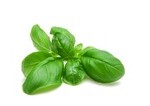 Basil :
Basil :
Basil is a bright green, leafy plant, Ocimum basilicum, which is in the mint family.
History/Region of Origin: Basil originated in India and Persia, and was both prized and despised by ancient peoples. Though its name means, “be fragrant,” Greeks hated it. However, the Romans loved it and made it a symbol of love and fertility and settlers in early America prized it. Today, Hindus plant it in their homes to bring happiness to the family.
Storage Tips: Store in cool, dark, dry places.
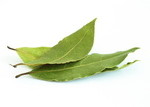 Bay Leaves :
Bay Leaves :
Bay Leaves come from the sweet bay or laurel tree, known botanically as Laurus nobilis. The elliptical leaves of both trees are green, glossy, and grow up to 3 inches long.
History/Region of Origin: Ancient Greeks and Romans crowned victors with wreaths of laurel. The term “baccalaureate,” means laurel berry, and refers to the ancient practice of honoring scholars and poets with garlands from the bay laurel tree. Romans felt the leaves protected them against thunder and the plague. Later, Italians and the English thought Bay Leaves brought good luck and warded off evil.
Storage Tips: Store in cool, dark, dry places.
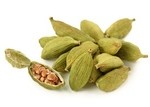 Cardamom :
Cardamom :
Cardamom is the ground seed of a tropical fruit in the ginger family known as Elettaria cardamomum. The seeds are found in oval-shaped fruit pods that are between 1/4- and 1-inch long.
History/Region of Origin: As early as the 4th century BC Cardamom was used in India as a medicinal herb. Greeks and Romans imported it as a digestive aid. In Sweden it has become a more popular spice than cinnamon.
Storage Tips: Store in cool, dark, dry places.
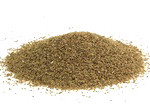 Celery Seed :
Celery Seed :
Celery Seed is the dried fruit of Apium graviolens, a biennial in the parsley family. This is the same genus and species used for growing table celery, although there are particular varieties that are used for the vegetable. The seeds are very small (about 1/16th of an inch), ovoid and light brown.
History/Region of Origin: Celery Seed and table celery are grown from a domesticated variety of a wild plant known as “small-age.” Small-age was grown by Greeks and Romans for medicinal qualities. It was associated with funerals and bad luck.
Storage Tips: Store in cool, dark, dry places.
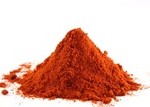 Chili Powder :
Chili Powder :
Chili Powder is a blend of spices that usually includes ground chili peppers, oregano, cumin, and garlic powder.
History/Region of Origin: Chili Powder is an invention of the 19th century American Southwest. Its development was an American attempt to create a mixture of chili peppers and other herbs similar to those used by the Aztecs in Mexico.
Storage Tips: Store in cool, dark, dry places.
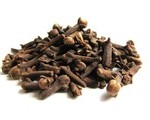 Cloves :
Cloves :
Cloves are the rich, brown, dried, unopened flower buds of Syzygium aromaticum, an evergreen tree in the myrtle family. The name comes from the French “clou” meaning nail.
History/Region of Origin: Cloves are native to the Molucca Islands, now a part of Indonesia. Cloves have been used for thousands of years. One of the earliest references to them says that the Chinese, in order to approach the emperor, had to have a few Cloves in their mouths to sweeten the breath. Cloves were once very costly and played an important part in world history. Wars were fought in Europe and with native islanders to secure rights to the profitable Clove business. Natives in the Molucca Islands planted a Clove tree for each child born. They believed that the fate of the tree was linked to the fate of that child. In 1816, the Dutch set a fire to destroy Clove trees and raise prices. The natives revolted in a bloody battle which changed the climate and politics of the area forever.
Storage Tips: Store in cool, dark, dry places.
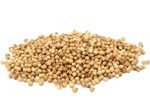 Coriander :
Coriander :
Coriander is the seed of Coriandrum sativum, a plant in the parsley family. The seed is globular and almost round, brown to yellow red, and 1/5 inch in diameter with alternating straight and wavy ridges .
History/Region of Origin: Coriander is probably one of the first spices used by mankind, having been known as early as 5000 BC. Sanskrit writings dating from about 1500 BC also spoke of it. In the Old Testament “manna” is described as “white like Coriander Seed.” (Exodus 16:31) The Romans spread it throughout Europe and it was one of the first spices to arrive in America.
Storage Tips: Store in cool, dark, dry places.
 Cumin :
Cumin :
Cumin is the pale green seed of Cuminum cyminum, a small herb in the parsley family. The seed is uniformly eliptical and deeply furrowed.
History/Region of Origin: An ancient spice, Cumin is native to the shores of the Mediterranean Sea and Egypt. Currently it is grown in many places, as it is rather easy to grow and adapts well to many climates. Cumin is one of the ancient spices, a favorite of the Romans and it is mentioned in the Old Testament. During medieval times, it was favored in Europe and Britain, but it seems to have gradually lost favor in those places. The increasing popularity of Mexican influenced foods is boosting the sale of Cumin.
Storage Tips: Store in cool, dark, dry places.
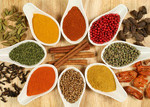 Curry Powder :
Curry Powder :
Curry Powder is a blend of many spices and is used widely in savory dishes throughout India and Southeast Asia.
Storage Tips: Store in cool, dark, dry places.
Dill is a tall, feathery annual, Anethum graveolens, in the parsley family. Both Dill Seed and Weed (dried leaves) come from the same plant
History/Region of Origin: Dill is indigenous to the Mediterranean area and southern Russia. It has been used since ancient times. Babylonian and Syrian herbalists used it, and Romans thought it was an effective stimulant for gladiators. Although native to the Mediterranean region, it became a staple in northern Europe where it is still popular. In fact, the name is derived from the old Norse word “dilla” meaning “to lull” because it was used to lull babies to sleep, and as an antidote to witchcraft and sorcery. Dill Weed is currently gaining popularity in North America.
Storage Tips: Store in cool, dark, dry places.
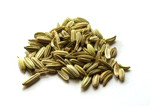 Fennel Seed :
Fennel Seed :
Fennel Seed is the oval, green or yellowish-brown dried fruit of Foeniculum vulgare, a member of the parsley family
History/Region of Origin: Fennel is native to southern Europe and the Mediterranean area. The name comes from the Greek word for “marathon” because the famous battle at Marathon (490 BC) against the Persians was fought on a field of Fennel. Pliny said that snakes casting off their skins ate Fennel to restore their eyesight
Storage Tips: Store in cool, dark, dry places.
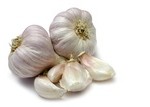 Garlic :
Garlic :
Garlic is the dried root of Allium sativum, a member of the lily family. Garlic grows in a bulb that consists of a number of cloves. Each clove is protected by a layer of skin, but all are held together in one larger unit by additional layers of skin.
History/Region of Origin: Garlic is native to central Asia, but its use spread across the world more than 5000 years ago, before recorded history. It was worshipped by the Egyptians and fed to workers building the Gread Pyramid at Giza, about 2600 BC. Greek athletes ate it to build their strength. Garlic came to the Western Hemisphere with some of the first European explorers, and its use spread rapidly. In the United States it was first cultivated in New Orleans by French settlers. Missionaries brought it to California, where it is grown today.
Storage Tips: Store in cool, dark, dry places.
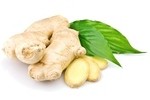 Ginger :
Ginger :
Ginger is a flavoring from a tuberous root of Zingiber officinale, a plantin the Ginger family. The root is often dried and ground or “crystallized” with sugar.
History/Region of Origin: No one is sure how old Ginger is, or where it came from, since it has never been found growing wild. It was first cultivated by the Chinese and Indians. It was one of the important spices that led to the opening of the spice trade routes. The name Ginger comes from the Sanskrit word “sinabera” meaning “shaped like a horn” because of its resemblance to an antler. In the 19th century it was popular to keep a shaker of Ginger on the counter in English pubs so the patrons could shake some into their drinks. This practice was the origin of ginger ale.
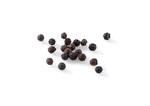 Pepper :
Pepper :
Pepper is the dried berry of Piper nigrum. This vine which can grow up to ten feet tall is indigenous to India and Asia. Pepper is actually berries that are picked about nine months after flowering. (This is true pepper, and should not be confused with paprika, cayenne pepper, chili pepper, red pepper, and bell pepper, which are fruits from the capiscum family.) Black Pepper, the spiciest, is berries that are picked unripe. The berries used for White Pepper are ripened on the vine and soaked so that their outer hulls are easily removed. Green Peppercorns are immature berries which are freeze-dried or packed in brine for preservation.
History/Region of Origin: Since the Roman times, Pepper has been the most important spice. The cities of Alexandria, Genoa, and Venice owed their economic success to Pepper. Three thousand year old Sanskrit literature mentions Pepper. It was one of the earliest items traded Asia and Europe. In 1101, victorious Genovese soldiers were each given two pounds of Pepper as a gift for their successful Palestinian conquest. In the Middle Ages, Europeans often used Pepper to pay rent, dowries, and taxes, and Shakespeare mentions Pepper in his plays. The need for Pepper inspired Spanish exploration and spice trade in the 15th century.
Storage Tips: Store in cool, dark, dry places.






























